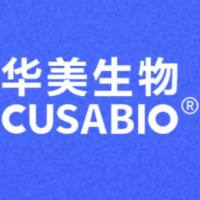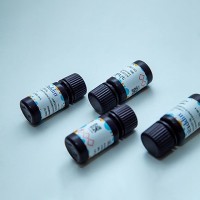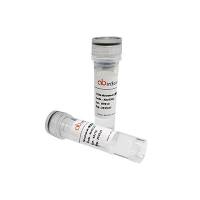Synthesis of a 4‐Selenothymidine Phosphoramidite and Incorporation into Oligonucleotides
互联网
- Abstract
- Table of Contents
- Materials
- Figures
- Literature Cited
Abstract
The detailed synthetic protocol for a 4?selenothymidine phosphoramidite and its use to prepare modified oligonucleotides is described here. The Se?phosphoramidite synthesis was achieved by developing a useful protection and deprotection system for the selenium functionality. The coupling reaction of the Se?phosphoramidite during solid?phase oligonucleotide synthesis is quantitative, and the oligonucleotides containing the Se?modification are stable. Based on crystal structure analysis, the selenium?modified oligonucleotides retain base?pairing like their native counterparts, and the derivatized DNA structure is virtually identical to the native structure. This achievement will present a novel opportunity for structural studies of nucleic acids and their protein complexes, because selenium can resolve the phase problem in macromolecular X?ray crystallography. In addition, this atom?specific replacement of oxygen with selenium will provide a useful tool for investigating biochemical and biophysical properties of nucleic acids and their protein complexes. Curr. Protoc. Nucleic Acid Chem. 32:1.19.1?1.19.13. © 2008 by John Wiley & Sons, Inc.
Keywords: nucleic acid; selenium; derivatization; structure determination; X?ray crystallography
Table of Contents
- Introduction
- Basic Protocol 1: Preparation of the 4‐Selenothymidine Phosphoramidite
- Support Protocol 1: Synthesis of DI(2‐Cyanoethyl) Diselenide
- Basic Protocol 2: Synthesis, Purification, and Characterization of Oligonucleotides Containing 4‐Selenothymidine
- Commentary
- Literature Cited
- Figures
- Tables
Materials
Basic Protocol 1: Preparation of the 4‐Selenothymidine Phosphoramidite
Materials
Support Protocol 1: Synthesis of DI(2‐Cyanoethyl) Diselenide
Materials
Basic Protocol 2: Synthesis, Purification, and Characterization of Oligonucleotides Containing 4‐Selenothymidine
Materials
|
Figures
-
Figure 1.19.1 Synthesis of the 4‐selenothymidine phosphoramidite (S.6 ) and 4‐Se‐T DNAs (S.7 ). View Image -
Figure 1.19.2 UV thermostability study of the Se‐DNA 9‐mer 5′‐ATGTSe TTCTC‐3′) heated at 60°C for 3 hr in buffer (5 mM NaH2 PO4 /Na2 HPO4 , pH 7.5). Reprinted from Salon et al. () with permission from the American Chemical Society. View Image -
Figure 1.19.3 HPLC analysis of crude 5′‐ O ‐DMTr‐GCGSe TATACGC‐3′ after cleavage from the solid support and deprotection of the nucleobases and backbone (retention time: 21.0 min). Reprinted from Salon et al. () with permission from the American Chemical Society. View Image -
Figure 1.19.4 MALDI‐MS analysis of purified 5′‐GCGSe TATACGC‐3′. Molecular formula: C97 H123 N38 O57 P9 Se. [M+H]+ : 3091.6 (calculated: 3092.0). Due to MS analysis resolution, this peak represents an average‐mass peak and the Se isotopic peaks are not resolved. Reprinted from Salon et al. () with permission from the American Chemical Society. View Image -
Figure 1.19.5 UV melting curves. (A ) Duplex of native DNAs 5′‐ATGGTGCTC‐3′ and 5′‐GAGCACCAT‐3′ ( T m = 39.2°C). (B ) Duplex of Se‐DNA 5′‐ATGGSe TGCTC‐3′ and native DNA 5′‐GAGCACCAT‐3′ ( T m = 38.6°C). Reprinted from Salon et al. () with permission from the American Chemical Society. View Image
Videos
Literature Cited
| Literature Cited | |
| Brandt, G., Carrasco, N., and Huang, Z. 2006. Efficient substrate cleavage catalyzed by hammerhead ribozymes derivatized with selenium for X‐ray crystallography. Biochemistry 45: 8972‐8977. | |
| Buzin, Y., Carrasco, N., and Huang, Z. 2004. Synthesis of selenium‐derivatized cytidine and oligonucleotides for X‐ray crystallography using MAD. Org. Lett. 6: 1099‐1102. | |
| Carrasco, N. and Huang, Z. 2004. Enzymatic synthesis of phosphoroselenoate DNA using thymidine 5′‐(a‐P‐seleno)triphosphate and DNA polymerase for X‐ray crystallography via MAD. J. Am. Chem. Soc. 126: 448‐449. | |
| Carrasco, N., Ginsburg, D., Du, W., and Huang, Z. 2001. Synthesis of selenium‐derivatized nucleosides and oligonucleotides for X‐ray crystallography. Nucleosides Nucleotides Nucleic Acids 20: 1723‐1734. | |
| Carrasco, N., Buzin, Y., Tyson, E., Halpert, E., and Huang, Z. 2004. Selenium derivatization and crystallization of DNA and RNA oligonucleotides for X‐ray crystallography using multiple anomalous dispersion. Nucleic Acids Res. 32: 1638‐1646. | |
| Carrasco, N., Caton‐Williams, J., Brandt, G., Wang, S., and Huang, Z. 2006. Efficient enzymatic synthesis of phosphoroselenoate RNA by using adenosine 5′‐(alpha‐P‐seleno)triphosphate. Angew. Chem. Int. Ed. Engl. 45: 94‐97. | |
| Chen, C.S. and Stadtman, T.C. 1980. Selenium‐containing tRNAs from Clostridium sticklandii: Cochromatography of one species with L‐prolyl‐tRNA. Proc. Natl. Acad. Sci. U.S.A. 77: 1403‐1407. | |
| Du, Q., Carrasco, N., Teplova, M., Wilds, C.J., Egli, M., and Huang, Z. 2002. Internal derivatization of oligonucleotides with selenium for X‐ray crystallography using MAD. J. Am. Chem. Soc. 124: 24‐25. | |
| Egli, M., Pallan, P.S., Pattanayek, R., Wilds, C.J., Lubini, P., Minasov, G., Dobler, M., Leumann, C.J., and Eschenmoser, A. 2006. Crystal structure of homo‐DNA and nature's choice of pentose over hexose in the genetic system. J. Am. Chem. Soc. 128: 10847‐10856. | |
| Jiang, J., Sheng, J., Carrasco, N., and Huang, Z. 2007. Selenium derivatization of nucleic acids for crystallography. Nucleic Acids Res. 35: 477‐485. | |
| Lezius, A.G. and Scheit, K.H. 1967. Enzymatic synthesis of DNA with 4‐thio‐thymidine triphosphate as substitute for dTTP. Eur. J. Biochem. 3: 85‐94. | |
| Logan, G., Igunbor, C., Chen, G.X., Davis, H., Simon, A., Salon, J., and Huang, Z. 2006. A novel and simple strategy for incorporation, protection, and deprotection of selenium functionality. Synlett 10: 1554‐1558. | |
| Mautner, H.G. 1956. The synthesis and properties of some selenopyridines and selenopyrimidines. J. Am. Chem. Soc. 78: 5292‐5294. | |
| Moroder, H., Kreutz, C., Lang, K., Serganov, A., and Micura, R. 2006. Synthesis, oxidation behavior, crystallization and structure of 2′‐methylseleno guanosine containing RNAs. J. Am. Chem. Soc. 128: 9909‐9918. | |
| Salon, J., Chen, G., Portilla, Y., Germann, M.W., and Huang, Z. 2005. Synthesis of a 2′‐Se‐uridine phosphoramidite and its incorporation into oligonucleotides for structural study. Org. Lett. 7: 5645‐5648. | |
| Salon, J., Sheng, J., Jiang, J., Chen, G., Caton‐Williams, J., and Huang, Z. 2007. Oxygen replacement with selenium at the thymidine 4‐position for the Se base pairing and crystal structure studies. J. Am. Chem. Soc. 129: 4862‐4863. | |
| Serganov, A., Yuan, Y.R., Pikovskaya, O., Polonskaia, A., Malinina, L., Phan, A.T., Hobartner, C., Micura, R., Breaker, R.R., and Patel, D.J. 2004. Structural basis for discriminative regulation of gene expression by adenine‐ and guanine‐sensing mRNAs. Chem. Biol.11: 1729‐1741. | |
| Serganov, A., Keiper, S., Malinina, L., Tereshko, V., Skripkin, E., Hobartner, C., Polonskaia, A., Phan, A.T., Wombacher, R., Micura, R., Dauter, Z., Jaschke, A., and Patel, D.J. 2005. Structural basis for Diels‐Alder ribozyme‐catalyzed carbon‐carbon bond formation. Nat. Struct. Mol. Biol. 12: 218‐224. | |
| Sheng, J., Jiang, J., Salon, J., and Huang, Z. 2007. Synthesis of a 2′‐Se‐thymidine phosphoramidite and its incorporation into oligonucleotides for crystal structure study. Org. Lett. 9: 749‐752. | |
| Sintim, H.O. and Kool, E.T. 2006. Enhanced base pairing and replication efficiency of thiothymidines, expanded‐size variants of thymidine. J. Am. Chem. Soc. 128: 396‐397. | |
| Sismour, A.M. and Benner, S.A. 2005. The use of thymidine analogs to improve the replication of an extra DNA base pair: A synthetic biological system. Nucleic Acids Res. 33: 5640‐5646. | |
| Teplova, M., Wilds, C.J., Wawrzak, Z., Tereshko, V., Du, Q., Carrasco, N., Huang, Z., and Egli, M. 2002. Covalent incorporation of selenium into oligonucleotides for X‐ray crystal structure determination via MAD: Proof of principle. Multiwavelength anomalous dispersion. Biochimie 84: 849‐858. | |
| Wilds, C.J., Pattanayek, R., Pan, C., Wawrzak, Z., and Egli, M. 2002. Selenium‐assisted nucleic acid crystallography: Use of DNA phosphoroselenoates for MAD phasing. J. Am. Chem. Soc. 124: 14910‐14916. |







